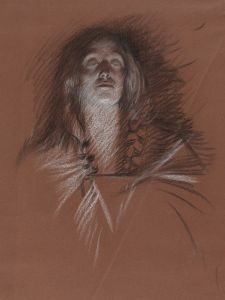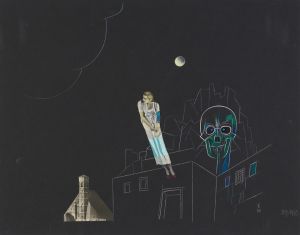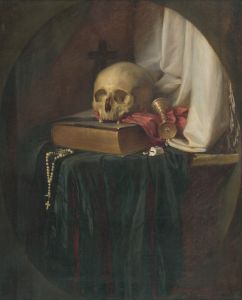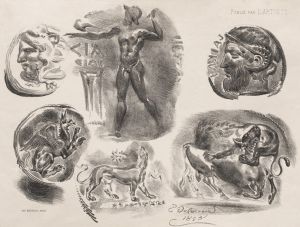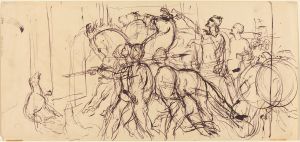
Hamlet and Horatio with the gravediggers
A hand-painted replica of Eugène Delacroix’s masterpiece Hamlet and Horatio with the gravediggers, meticulously crafted by professional artists to capture the true essence of the original. Each piece is created with museum-quality canvas and rare mineral pigments, carefully painted by experienced artists with delicate brushstrokes and rich, layered colors to perfectly recreate the texture of the original artwork. Unlike machine-printed reproductions, this hand-painted version brings the painting to life, infused with the artist’s emotions and skill in every stroke. Whether for personal collection or home decoration, it instantly elevates the artistic atmosphere of any space.
Eugène Delacroix, a prominent French Romantic artist, created the painting "Hamlet and Horatio with the Gravediggers" in 1839. This work is inspired by William Shakespeare's iconic play "Hamlet," specifically Act V, Scene I, which is one of the most famous scenes in the play. Delacroix was known for his vivid use of color and expressive brushwork, and he often drew inspiration from literature, history, and contemporary events, making Shakespeare's works a fitting subject for his artistic exploration.
In "Hamlet and Horatio with the Gravediggers," Delacroix captures the moment when Prince Hamlet and his loyal friend Horatio encounter the gravediggers in a churchyard. This scene is significant in the play as it precedes the discovery of Ophelia's grave and features Hamlet's famous contemplation of mortality, highlighted by his musings over the skull of Yorick, the king's jester. Delacroix's painting reflects the somber and contemplative mood of this scene, emphasizing themes of death and the passage of time.
Delacroix's interpretation of the scene is marked by his characteristic Romantic style, which often emphasized emotion and drama. The painting is noted for its dynamic composition and the way it captures the tension and philosophical depth of the encounter. Delacroix's use of color and light adds to the emotional intensity, drawing the viewer into the existential questions posed by the scene.
The figures in the painting are rendered with a sense of movement and vitality, typical of Delacroix's work. Hamlet is depicted in a moment of introspection, holding the skull and contemplating the inevitability of death. Horatio stands by his side, a steady and loyal presence, while the gravediggers continue their work, seemingly indifferent to the philosophical musings of the prince. This juxtaposition of the mundane and the profound is a central theme in both the play and Delacroix's painting.
Delacroix's interest in Shakespeare was part of a broader 19th-century fascination with the playwright, whose works were being rediscovered and celebrated across Europe. Delacroix himself was deeply influenced by the dramatic and emotional depth of Shakespeare's characters and stories, which resonated with the Romantic ideals of individualism and emotional expression.
The painting "Hamlet and Horatio with the Gravediggers" is an example of how Delacroix brought literary themes to life through his art, using his skills to explore complex human emotions and philosophical questions. It remains a testament to his ability to translate the written word into visual form, capturing the essence of Shakespeare's work while adding his unique artistic interpretation.
Today, Delacroix's painting is appreciated not only for its artistic merit but also for its contribution to the visual representation of Shakespeare's plays. It serves as a bridge between literature and visual art, demonstrating the enduring impact of Shakespeare's work on artists and audiences alike.





